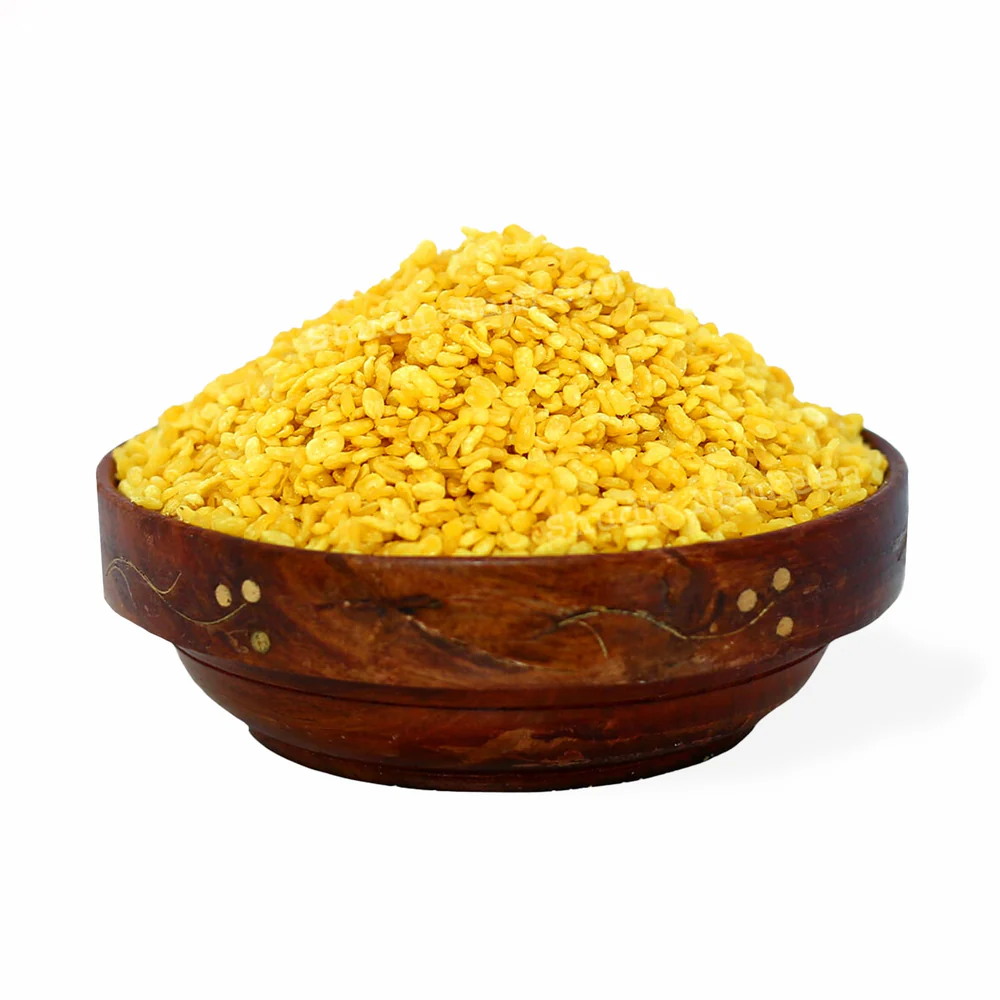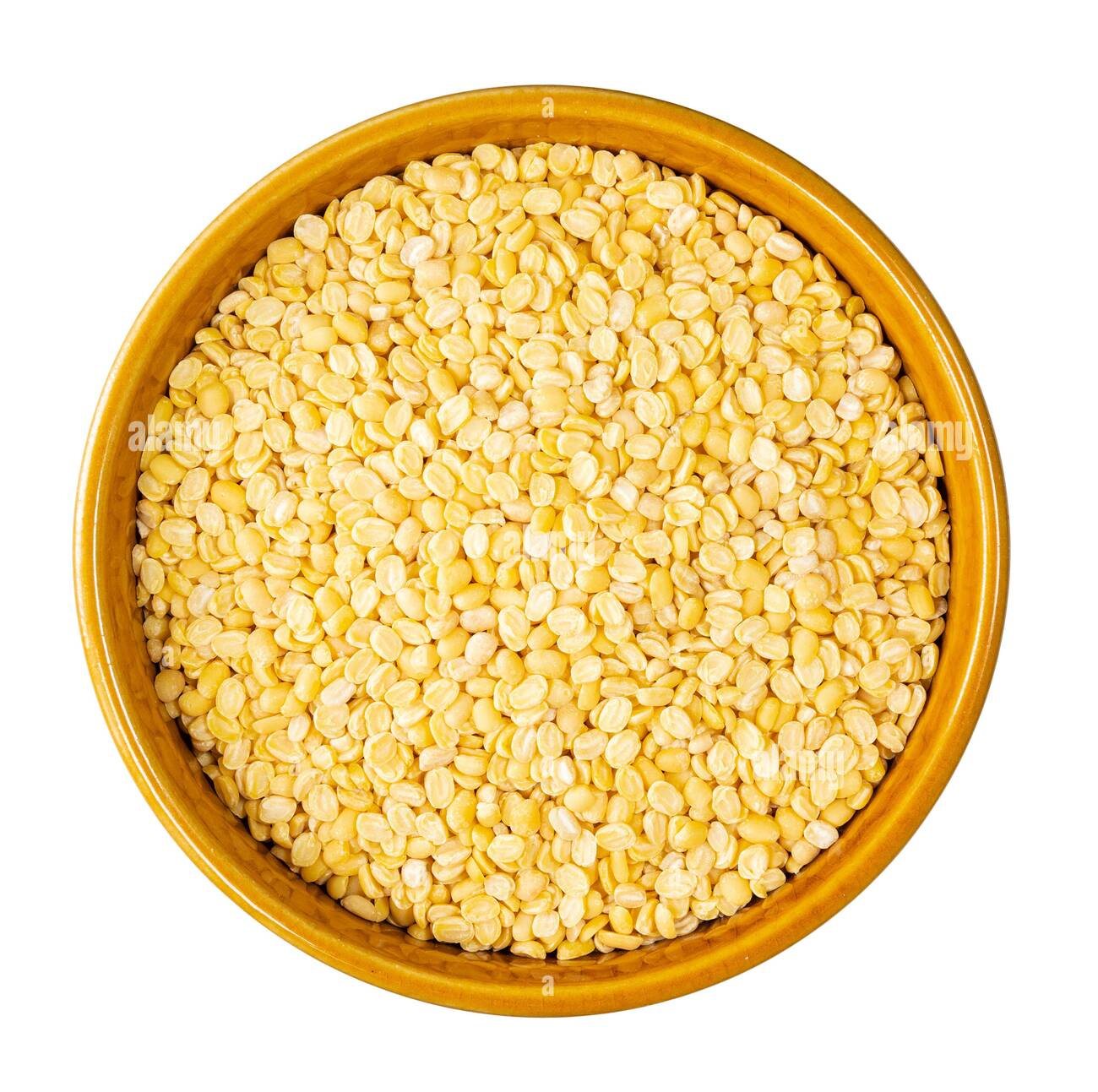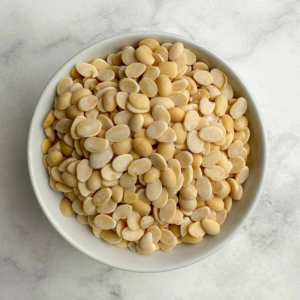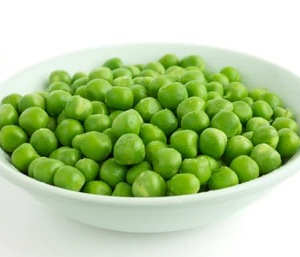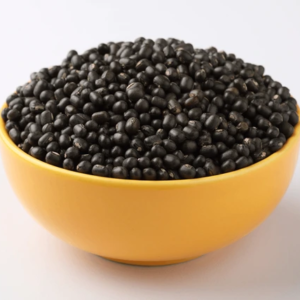Description
Mung beans are small, oval-shaped beans with a smooth skin that is typically green but can sometimes be yellow or brown. When split and hulled, they become moong dal, which is more commonly used in Indian cuisine for dals, soups, curries, and stews. Mung beans are often used in their whole form in salads, soups, and stir-fries or sprouted to make mung bean sprouts.
Mung beans are highly nutritious and are considered an excellent source of plant-based protein, dietary fiber, vitamins, and minerals. They are also easier to digest compared to many other legumes, making them a popular choice for people with sensitive stomachs.
Nutritional Profile of Mung Beans (Moong Dal):
Mung beans are low in fat and rich in essential nutrients. A 1-cup serving (approximately 200 grams) of cooked mung beans contains:
- Protein: Mung beans are an excellent source of plant-based protein, providing around 14 grams of protein per cup. This makes them a great option for vegetarians and vegans.
- Carbohydrates: Approximately 40 grams of carbohydrates, including around 15 grams of dietary fiber. The high fiber content helps with digestion and supports heart health.
- Vitamins: Mung beans are rich in several important vitamins, particularly B-vitamins like folate (B9), thiamine (B1), and pyridoxine (B6). These vitamins are essential for energy metabolism, nervous system function, and overall cellular health.
- Minerals: Mung beans contain key minerals such as iron, magnesium, potassium, phosphorus, and zinc. Iron is especially important for preventing anemia, while magnesium and potassium support heart health and muscle function.
- Antioxidants: Mung beans contain antioxidants, including polyphenols, flavonoids, and Vitamin C. These antioxidants help reduce inflammation, protect cells from oxidative damage, and support overall immune function.
Health Benefits of Mung Beans (Moong Dal):
1. High-Quality Protein Source:
Mung beans are an excellent plant-based protein, providing all the essential amino acids necessary for building and repairing tissues, making them ideal for vegetarians and vegans. The protein in mung beans also helps with immune function, hormone regulation, and muscle growth.
2. Supports Digestive Health:
Mung beans are rich in dietary fiber, which helps promote healthy digestion. Fiber adds bulk to stool, preventing constipation and improving bowel regularity. It also supports the growth of beneficial gut bacteria, which is crucial for gut health and immunity.
3. Helps in Weight Management:
Mung beans are low in fat and high in fiber and protein, which can promote feelings of fullness and help with weight management. Eating fiber-rich foods like mung beans can help reduce overeating and prevent unnecessary calorie consumption. The protein in mung beans also supports muscle mass, which may help maintain a healthy metabolism.
4. Supports Heart Health:
The high fiber content in mung beans helps lower cholesterol levels and reduce the risk of heart disease. Fiber helps bind to excess cholesterol in the digestive tract and removes it from the body. Mung beans are also rich in potassium and magnesium, which help regulate blood pressure and support healthy heart function.
5. Stabilizes Blood Sugar Levels:
Mung beans have a low glycemic index, which means they release energy slowly into the bloodstream, helping to stabilize blood sugar levels. This makes mung beans a good food choice for people with diabetes or those looking to manage their blood sugar levels. The fiber in mung beans also helps prevent blood sugar spikes after meals.
6. Rich in Antioxidants:
Mung beans contain various antioxidants, including flavonoids, polyphenols, and Vitamin C, which help neutralize harmful free radicals in the body. These antioxidants reduce oxidative stress, lower inflammation, and may protect the body from chronic diseases, including cancer, cardiovascular disease, and neurodegenerative disorders.
7. Improves Skin Health:
Mung beans are known for their detoxifying properties. They are often used in Ayurvedic medicine to help cleanse the body of toxins and improve skin health. The antioxidants and anti-inflammatory compounds in mung beans help protect the skin from damage, promote a clear complexion, and support wound healing.
8. Promotes Bone Health:
Mung beans are a good source of minerals like calcium, magnesium, and phosphorus, all of which are essential for maintaining strong bones and preventing conditions like osteoporosis. Magnesium, in particular, is important for bone mineralization and maintaining bone density.
9. Boosts Immune System:
Mung beans are rich in Vitamin C and other antioxidants, which help strengthen the immune system by protecting against infections and promoting faster healing. The high fiber content also supports gut health, which is integral to immune function, as a large portion of the immune system resides in the gut.
10. Detoxification:
Mung beans are considered a natural detoxifier. They help cleanse the digestive system by promoting healthy bowel movements and reducing bloating. In Ayurveda, mung beans are often recommended for detoxifying the body, as they are easy to digest and help clear out toxins without causing digestive distress.
How to Use Mung Beans (Moong Dal):
- Mung Bean Soup or Stew: Mung beans are commonly used in soups and stews, where they can be simmered with vegetables, spices, and broths for a nourishing meal. Moong dal can also be used to make hearty dals in Indian cuisine, where it is cooked with turmeric, cumin, ginger, and other spices.
- Sprouts: Mung beans can be sprouted by soaking them in water overnight and then allowing them to germinate for a few days. Mung bean sprouts are commonly used in salads, sandwiches, stir-fries, and even as a garnish for various dishes.
- Moong Dal Chilla (Pancakes): Moong dal is often ground into a batter and used to make savory pancakes called “chilla” in Indian cuisine. These pancakes are typically filled with vegetables and served as a snack or light meal.
- Mung Bean Curries: Mung beans can be cooked in a variety of curries, particularly in Indian cuisine. Moong dal curry is made by cooking the dal with spices like cumin, coriander, turmeric, and garam masala.
- Mung Bean Salad: Sprouted or cooked mung beans can be used in salads with fresh vegetables, herbs, lemon juice, and olive oil for a healthy and refreshing dish.
- Mung Bean Pudding or Dessert: In some cultures, mung beans are used to make sweet dishes, such as mung bean pudding or halwa. These dishes are typically made by cooking mung beans with jaggery, coconut milk, and spices like cardamom.
- Moong Dal Khichdi: This is a comforting one-pot dish made by cooking moong dal with rice and spices. It is easy to digest and often consumed during illness or as a light meal.
- Smoothies and Protein Shakes: Mung beans can be cooked, pureed, and added to smoothies or protein shakes for an extra boost of protein and fiber.
Considerations:
- Soaking: While mung beans are generally easy to digest compared to other legumes, soaking them for a few hours before cooking can help reduce their cooking time and improve digestibility.
- Allergies: Mung beans are generally well-tolerated, but some individuals may be allergic to them. If you experience any signs of an allergic reaction, such as itching, swelling, or difficulty breathing, seek medical attention immediately.
- Storage: Dried mung beans should be stored in an airtight container in a cool, dry place. They can last for up to a year if stored properly. Cooked mung beans should be refrigerated and used within 3-4 days.
In Summary:
Mung beans (Moong Dal) are a highly nutritious, versatile legume that provides a wealth of health benefits. Rich in protein, fiber, vitamins, and minerals, they support heart health, digestive health, weight management, and overall well-being. Mung beans can be used in a variety of dishes, including soups, curries, salads, and desserts, and are especially popular in Indian, Southeast Asian, and Middle Eastern cuisines. Their detoxifying and easy-to-digest nature makes them an ideal food for promoting overall health and wellness.


